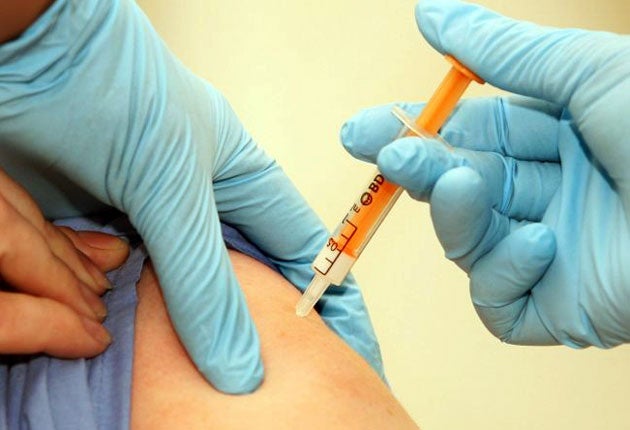Scientists discover 'blue print' for revolutionary universal flu vaccine
A set of naturally occurring immune cells could play a crucial role in the body's resistance to flu

Scientists have discovered the “blue print” for a revolutionary universal flu vaccine that could protect against all strains of seasonal influenza – even new deadly new viruses never encountered before.
A study which involved a rapidly-organised “natural experiment” triggered by the swine flu pandemic of autumn 2009 has uncovered strong evidence that a set of naturally occurring immune cells could play a crucial role in the body's resistance to flu.
More than 300 staff and students at Imperial College London were recruited for the study at the start of the pandemic and their conditions monitored for the length of the outbreak. The findings were published in the journal Nature Medicine on Sunday.
Those who avoided severe illness were found to have more CD8 T cells, a type of virus-killing immune cell, in their blood at the start of the pandemic.
Professor Ajit Lalvani, from the National Heart and Lung Institute at Imperial College London, who led the study, said that a vaccine that made the body produce more of these cells had the potential to be “the Holy Grail”: a universal vaccine effective against all strains of flu.
“The immune system produces these CD8 T cells in response to usual seasonal flu,” Prof Lalvani said. “Unlike antibodies, they target the core of the virus, which doesn’t change, even in new pandemic strains. The 2009 pandemic provided a unique natural experiment to test whether T cells could recognise, and protect us against, new strains that we haven’t encountered before and to which we lack antibodies.”
Existing flu vaccines make the immune system create antibodies that recognise structures on the surface of the virus, to prevent infection with the most prevalent current strains. However, health authorities are often one step behind as new viruses with different surface structures are constantly evolving and vaccines have to be changed each year.
“New strains of flu are continuously emerging, some of which are deadly, and so the Holy Grail is to create a universal vaccine that would be effective against all strains of flu,” Prof Lalvani said.
Health authorities welcomed the study, which could mark a major step in protecting populations against possibly deadly future flu outbreaks.
Dr Richard Pebody, responsible for flu surveillance in the Respiratory Diseases Department at Public Health England said: “Influenza is continually evolving and it is difficult to predict what strains will emerge each year. These findings contribute to the science to determine if it is possible to develop a universal vaccine to protect a population against all strains of flu. The study results are a timely reminder for people to get their flu jab this winter.”
The swine flu outbreak of 2009 killed more than 200 people in the UK, with the virus infecting millions worldwide. Historically, flu outbreaks have had a devastating effect. Tens of millions of people died worldwide during the Spanish flu pandemic of 1918.
Global health authorities are currently monitoring the spread of a new strain of bird flu, H7N9, described by the World Health Organisation as an “unusually dangerous virus for humans”. As of late August, the virus had infected 135 people in China and resulted in 44 deaths since February.
Prof Lalvani said that, in theory, the potentially universal vaccine may not be far off.
“We already know how to stimulate the immune system to make CD8 T cells by vaccination,” he said. “Now that we know these T cells may protect, we can design a vaccine to prevent people getting symptoms and transmitting infection to others. This could curb seasonal flu annually and protect people against future pandemics.”
Subscribe to Independent Premium to bookmark this article
Want to bookmark your favourite articles and stories to read or reference later? Start your Independent Premium subscription today.

Join our commenting forum
Join thought-provoking conversations, follow other Independent readers and see their replies